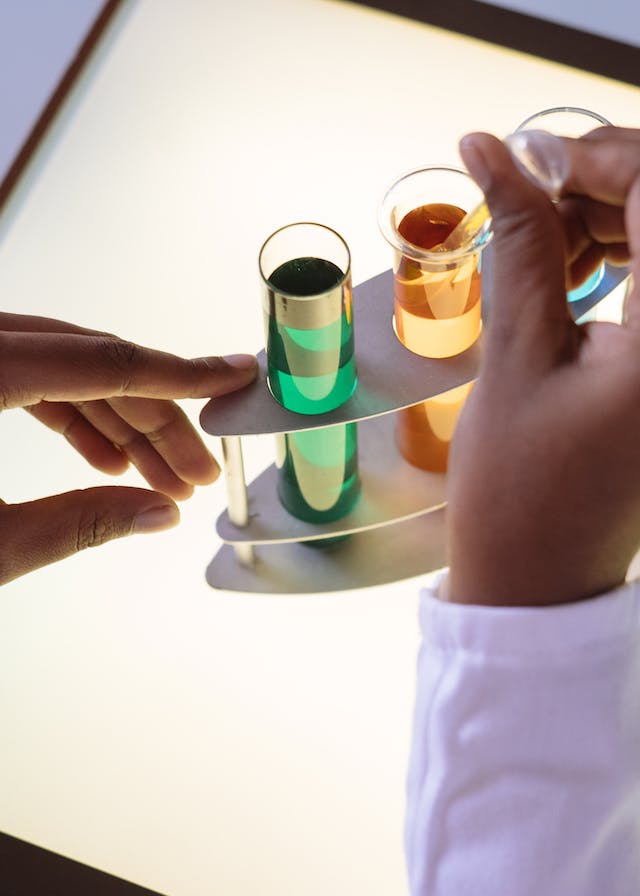Extractables and Leachables or E&L is a term used in the pharmaceutical industry to analyze potentially harmful chemicals that can be present in a device or drug. The manufacturers in a laboratory setting may assess whether a packaging’s chemicals are transferred to the medicine during production.
There are some ingredients in certain drugs that can be seen as soluble or insoluble, or you might say “leachable” or “extractable,” and they should be removed as soon as possible if they are found harmful to humans. The methods of using leachables and extractables may use atomic absorption spectroscopy and liquid chromatography for analyzing non-volatile chemicals. The FDA has defined the two terms:
Extractables – These are compounds that the tester can extract from a closed container system if they are in the presence of a solvent.
Leachables – Leachables are chemicals that may leach into the drug formulation from the container because of direct contact.
In pharmacies, the migration of the chemicals from their components up to the packaging should all be checked and tested. The laboratory analysis will consider all the primary and secondary containers, labeling adhesives, sealing materials, and inks. Those materials from the processing systems might find their way into the drug or formulation, which can be toxic. They may influence the biology and stability of a specific compound in the capsule, so they should be detected as early as possible.
In the case of medical and combination devices, there is regulatory information like the ISO 1099318 that may include various products. They may be in the form of skin patches, syringes, and implant devices that should go extractable and leachable testing. See more about leachables on this site here.
What are the Components?
Extractables are the parts of a pharmaceutical product that can be removed by physical or chemical means, such as evaporation, filtration, and distillation. These components may include but are not limited to active ingredients, excipients, and solvents.
Leachable components are the parts of a pharmaceutical product that can be absorbed in the drug, and they may include phthalates, nitrosamines, residual monomer, anti-static coating, stabilizers, anti-oxidants, vulcanizing agents, dyes, colorants, lubricants, emulsifiers, oligomer species, polymer, residual monomer, and many more.
The Purpose of the E&L Testing
E&L are two types of contaminants that can be found in pharmaceutical products. Leachables are materials that can escape from a product during use, such as liquids and solids. Extractables are materials that can be extracted from a product using a solvent, such as water or ethanol. Both of the compounds can be harmful if not properly cleaned or removed from the product.
A lot of people have implanted medical devices, and plastic is one of the most extensively used products out there. They cover a lot of devices with polymers like silicones, polycarbonate, polyurethanes, polyvinylchloride, and other components. These are also true with manufacturing new prescription drugs and other compounds. See more about pharma manufacturing on this page: https://en.wikipedia.org/wiki/Pharmaceutical_manufacturing.
The use of additives will enhance the properties of the polymer, but they may contain impurities and by-products after the synthesis. When the small molecules are going to be released from the matrix, they may add to the material’s toxicity, which can cause a lot of harm to the human body.
Qualified toxicologists will calculate the elemental impurities, metals, semi-volatile compounds, and non-volatile compounds with the help of various methods. They will record the analytical evaluation threshold and see if further studies are needed to control the risks in the final result.
The leachable that’s found its way into various pharmaceutical products during the packaging and manufacturing must be monitored and identified during the entire shelf life of the drug. The data will be collated, and it will be under assessment to make sure that the patients are safe.
The key is to know the safety concern threshold of the product under investigation, and a qualified research group generally does this. Many of them make sure that there are not going to be any carcinogenic ingredients or materials that will endanger the safety and lives of consumers.
Leachables are any liquids, gasses, or solids that escape from a drug product during its manufacturing or distribution process. Extractables are any liquid, gas, or solid particles that are removed by filtration during the manufacturing or distribution process. Many companies can help you deal with them by removing them, changing the packaging, or going on another safer and more effective formulation.
A Final Word
E&L are substances that can be removed from pharmaceutical products during the manufacturing process. These substances can include impurities, by-products, and unauthorized ingredients. They can also contain harmful contaminants, which can cause adverse effects in humans.
They should be eliminated from pharmaceutical products to ensure safe and effective use. By monitoring the manufacturing process and removing them as soon as they are detected, manufacturers can ensure that their products are safe for human use.

